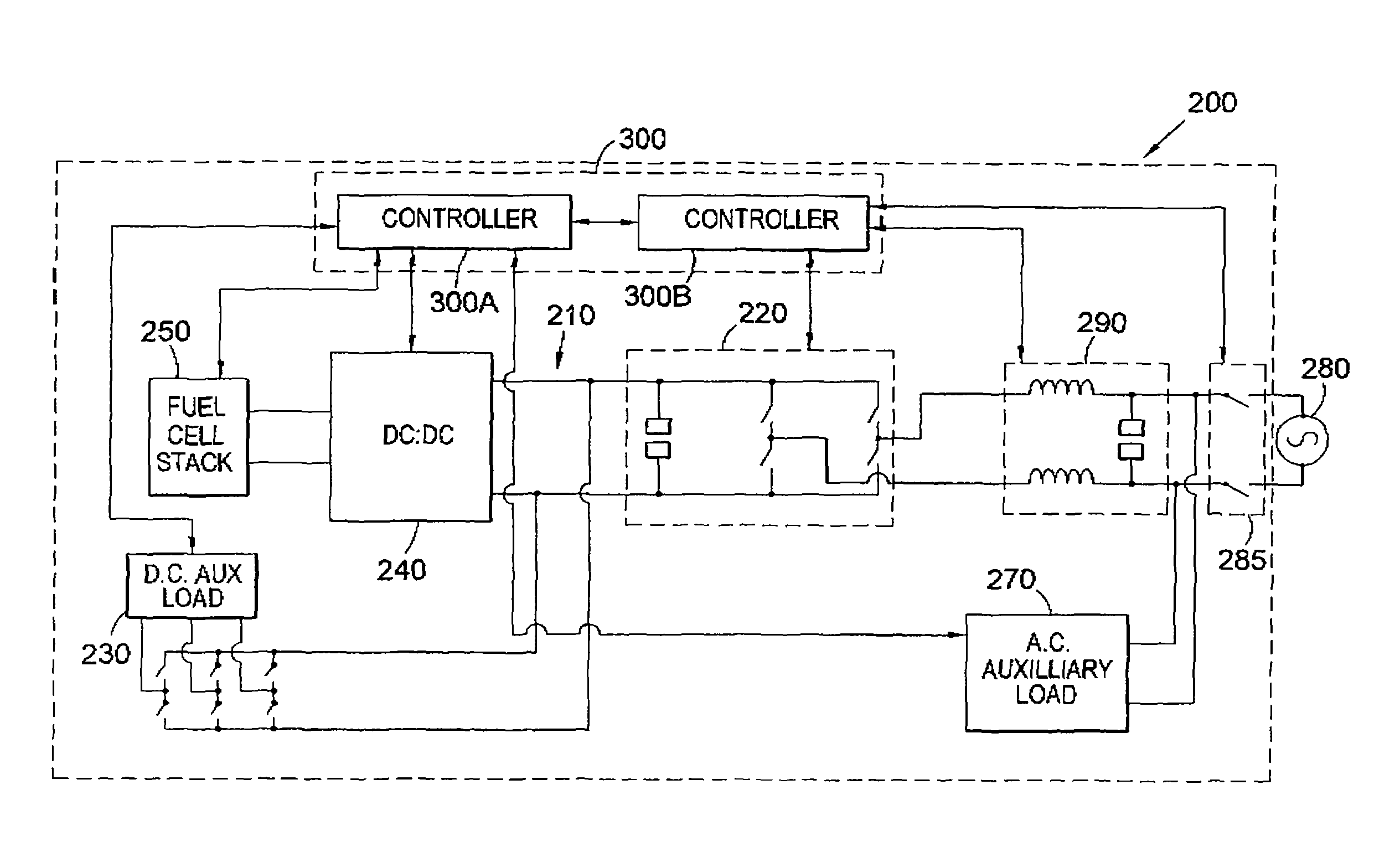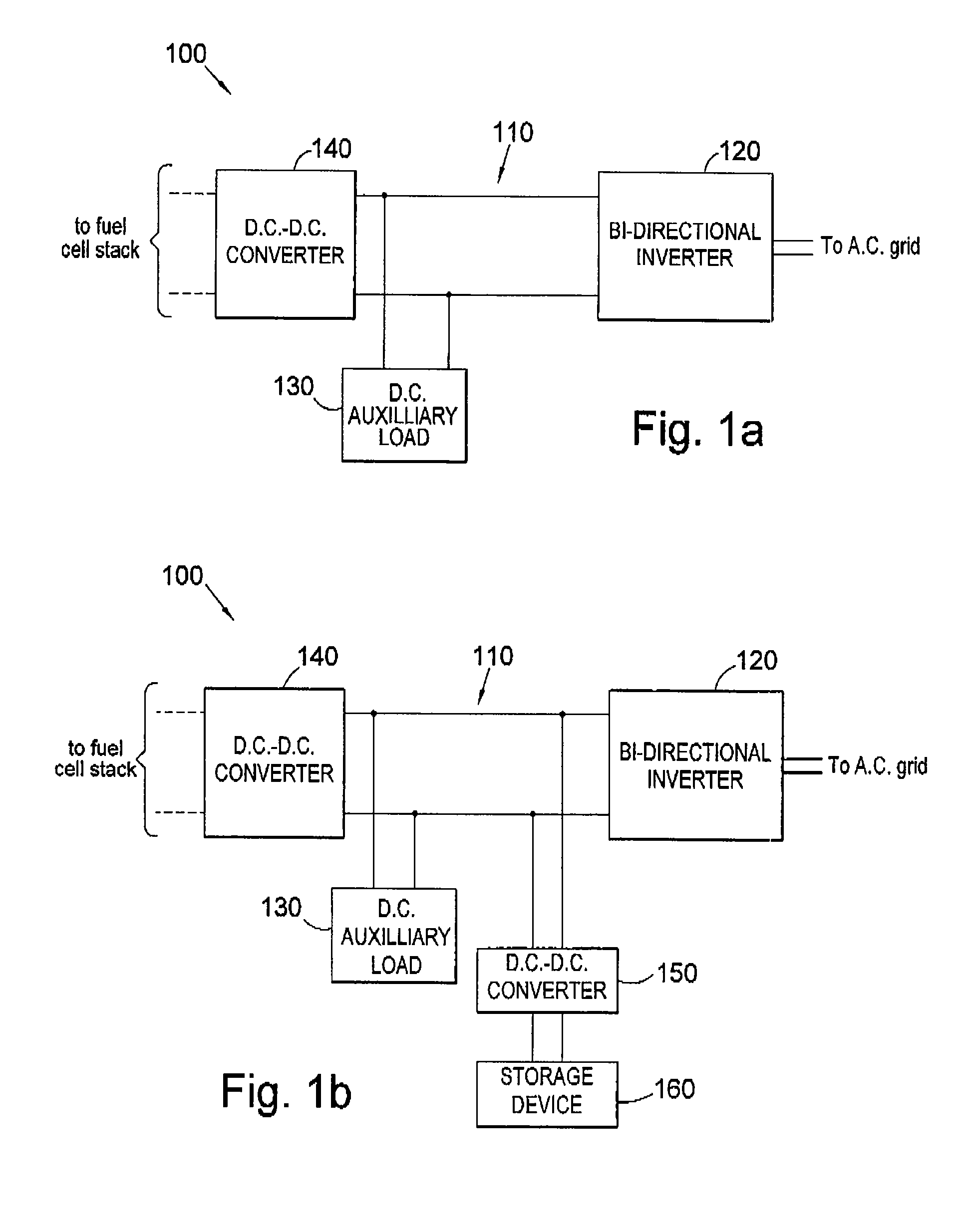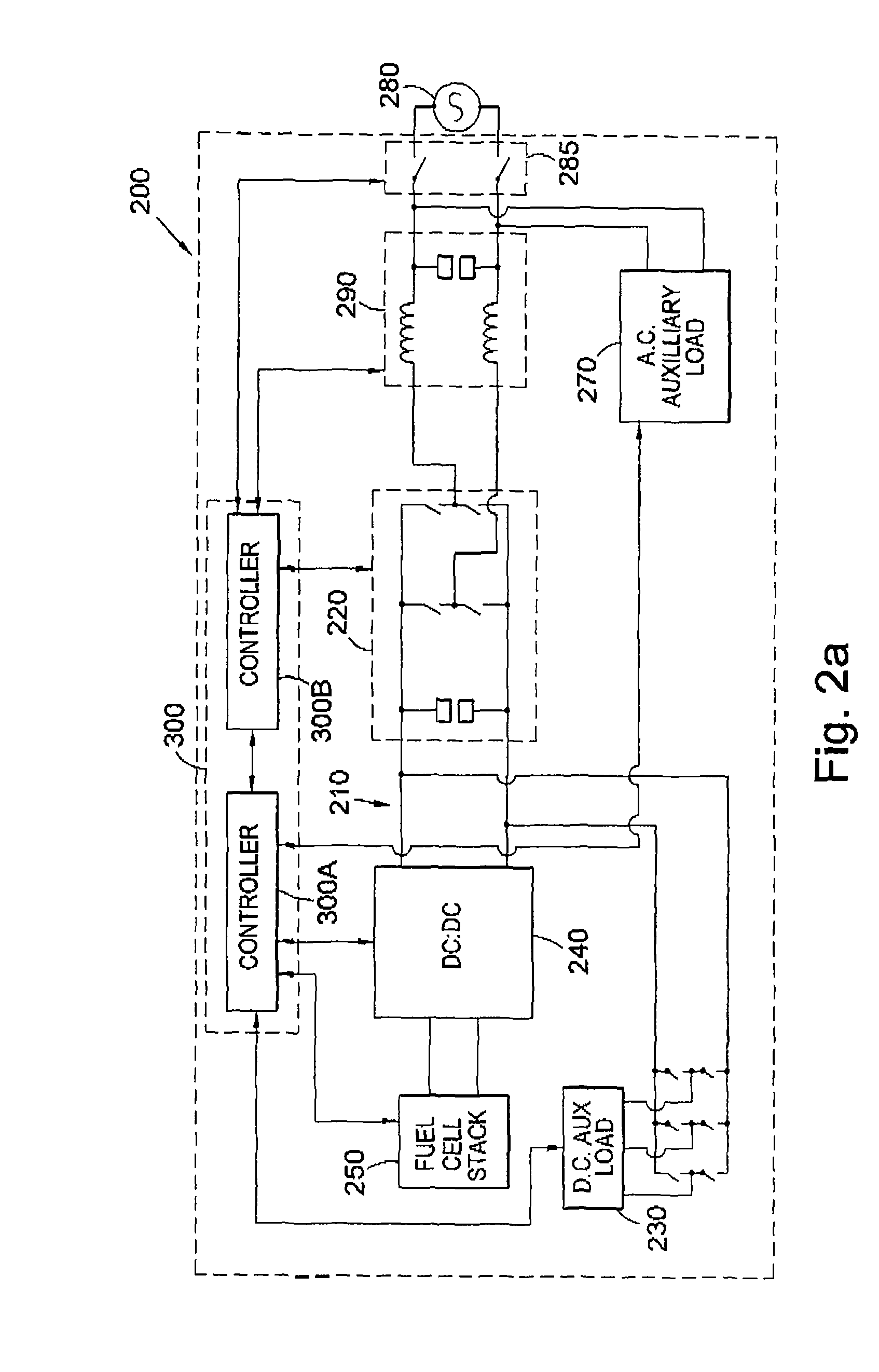Power supply control for power generator
a power generator and power supply technology, applied in emergency power supply arrangements, dc-ac conversion without reversal, transportation and packaging, etc., can solve the problems of insufficient power from one fuel cell to satisfy the electrical load requirements of applications, instantaneous start and stop generating electricity, etc., and achieve the effect of loss of efficiency
- Summary
- Abstract
- Description
- Claims
- Application Information
AI Technical Summary
Benefits of technology
Problems solved by technology
Method used
Image
Examples
first embodiment
[0033]FIG. 1b shows a variation of the control system according to the In this variation, like components are referred to with like reference numerals. In this variation, which otherwise corresponds to that discussed above in relation to FIG. 1a, a further D.C.:D.C. converter 150 is provided, which is connected to the voltage regulated D.C. bus 110. An electrical energy storage device 160 is connected to the D.C. bus 110 via the further D.C.:D.C. converter 150. In the present embodiment, the storage device is a battery system. However, other storage devices could include capacitors, flywheels or others as would be known to one skilled in the art.
[0034]FIG. 2a shows a second embodiment of the invention. The second embodiment is similar to the first embodiment, and shares the features shown in the first embodiment. Therefore, a D.C. bus 210 is provided, which is voltage regulated by a bidirectional inverter 220. In the present embodiment, the bidirectional inverter 220 is shown in a ...
second embodiment
[0039]FIGS. 2b and 2c show two variations of the Like components between the figures are referred to by like reference numerals. The variation shown in FIG. 2b corresponds to that shown in FIG. 2a, with the exception that a D.C.: D.C. converter 310 is connected to the D.C. bus 210. An electrical energy storage device 320 is connected to the D.C. bus 210 via the D.C.:D.C. converter 310. The D.C.:D.C. converter 310 also includes a controller, to control the energy transfer between the storage device 320 and the D.C. bus 210. The controller in the D.C.:D.C. converter 310 is coupled to the controller 300.
[0040]FIG. 2c shows a variation on the second embodiment in which a D.C.:D.C. converter 310a is provided, coupled to the D.C. bus 210, and also coupled to a further D.C. bus 410, external to the system 200. One or more D.C. storage devices 320a are connected to the further D.C. bus 410. Additionally, or alternatively, one or more further fuel cell systems may be connected to the furthe...
PUM
 Login to View More
Login to View More Abstract
Description
Claims
Application Information
 Login to View More
Login to View More - R&D
- Intellectual Property
- Life Sciences
- Materials
- Tech Scout
- Unparalleled Data Quality
- Higher Quality Content
- 60% Fewer Hallucinations
Browse by: Latest US Patents, China's latest patents, Technical Efficacy Thesaurus, Application Domain, Technology Topic, Popular Technical Reports.
© 2025 PatSnap. All rights reserved.Legal|Privacy policy|Modern Slavery Act Transparency Statement|Sitemap|About US| Contact US: help@patsnap.com



